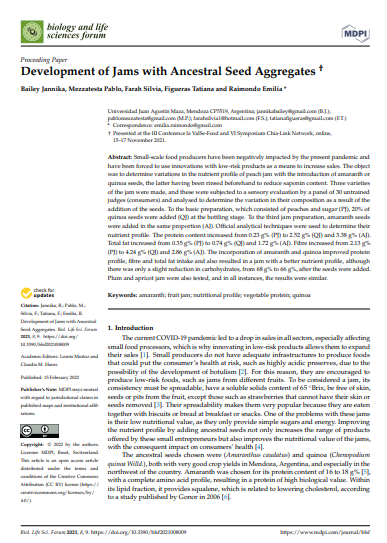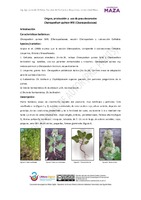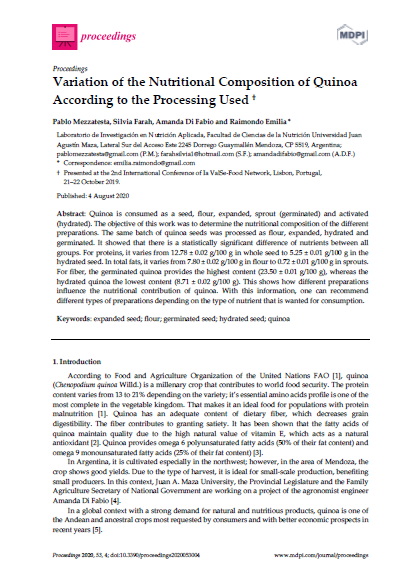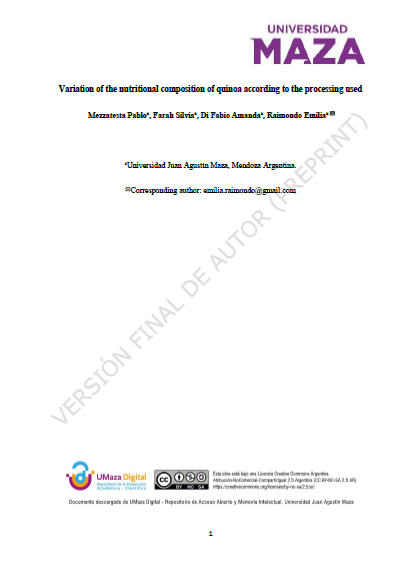Browsing Artículos científicos by Subject "Quinoa"
Now showing items 1-4 of 4
-
Development of Jams with Ancestral Seed Aggregates
(Comite editorial Biology and Life Science Forum, 2022-02-15)Small-scale food producers have been negatively impacted by the present pandemic and have been forced to use innovations with low-risk products as a means to increase sales. The object was to determine variations in the nutrient profile of peach jam with the introduction of amaranth or quinoa seeds, the latter having been rinsed beforehand to reduce saponin content. Three varieties of the jam were made, and these were subjected to a sensory evaluation by a panel of 30 untrained judges (consumers) and analysed to determine the variation in their composition as a result of the addition of the ... -
Origen, producción y uso de pseudocereales
(2018)La Ingeniera Agrónoma Amanda Di Fabio propone incorporar el desarrollo de quínoa en la provincia de Mendoza, para ser utilizado como importante fuente de nutrientes fundamentales en la alimentación de los niños. Además lo presenta en este Power Point como un grano de alto potencial nutritivo, de fácil desarrollo y el cual contribuye a la seguridad alimentaria en países, donde la población no tiene acceso a fuentes de proteína, o poseen limitaciones en la producción de alimentos. -
Variation of the Nutritional Composition of Quinoa According to the Processing Used
(Consejo Editorial Proceedings, 2020-08-04)Quinoa is consumed as a seed, flour, expanded, sprout (germinated) and activated (hydrated). The objective of this work was to determine the nutritional composition of the different preparations. The same batch of quinoa seeds was processed as flour, expanded, hydrated and germinated. It showed that there is a statistically significant difference of nutrients between all groups. For proteins, it varies from 12.78 ± 0.02 g/100 g in whole seed to 5.25 ± 0.01 g/100 g in the hydrated seed. In total fats, it varies from 7.80 ± 0.02 g/100 g in flour to 0.72 ± 0.01 g/100 g in sprouts. For fiber, the ... -
Variation of the nutritional composition of quinoa according to the processing used
(, 2020)In Mendoza, Argentina, quinoa is grown with a very good yield, and its consumption is becoming widespread. It is consumed as a seed, flour, expanded, sprout (germinated) and activated (hydrated). The popular belief is that all these forms have the same nutritional contribution. Taking into account this belief, the objective of this work was to determine the nutritional composition of the different preparations. The same batch of quinoa seeds was processed as flour, expanded, hydrated and sprout. It was analyzed by triplicate, applying conventional laboratory techniques. For the statistical ...













